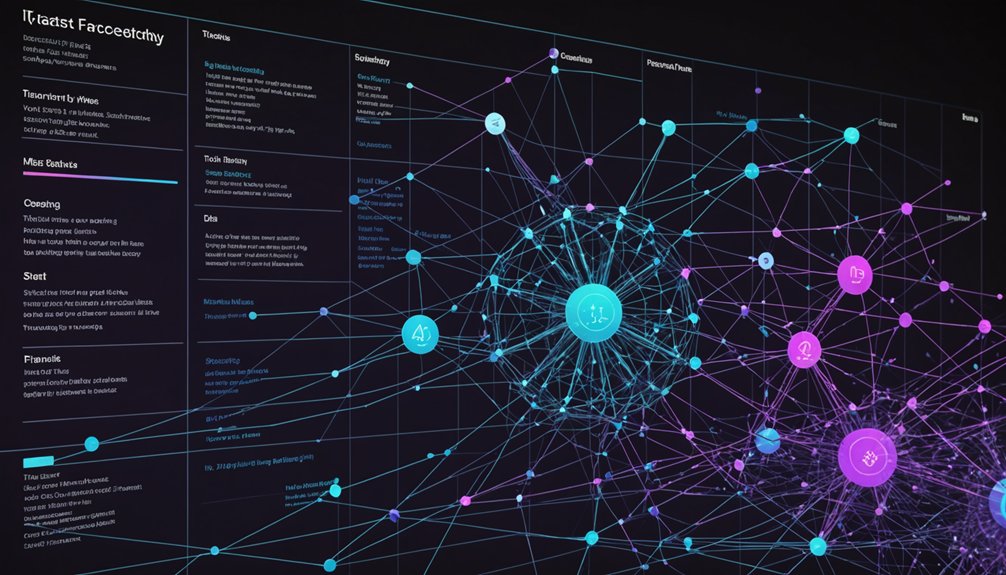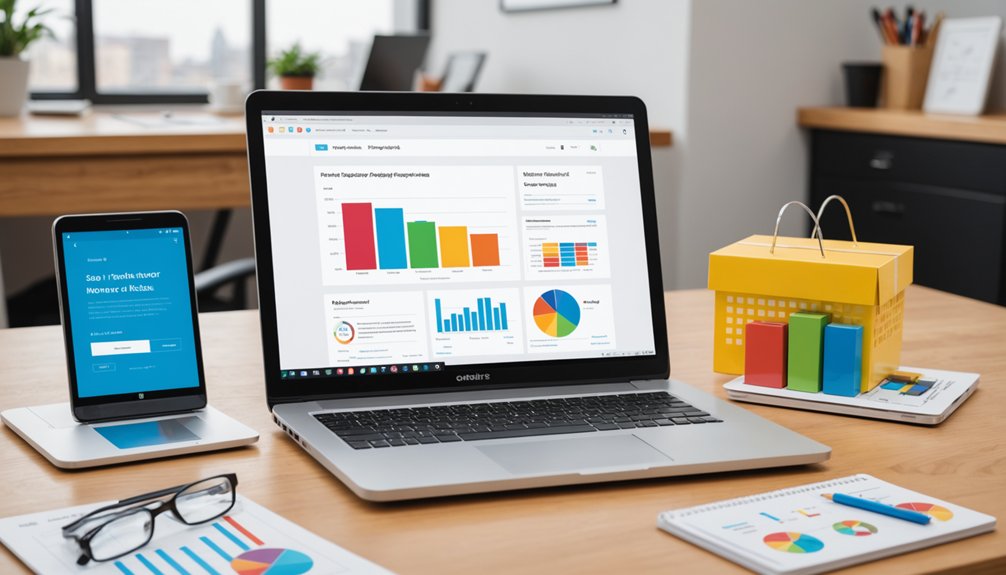Time series forecasting in 2025 relies heavily on transformer-based approaches and deep learning models. LSTMs and GRUs now outperform traditional methods like ARIMA by capturing complex patterns missed before. Neural networks process massive datasets in seconds, not hours. Probabilistic forecasting offers decision-makers ranges of outcomes, not just point estimates. Quality data remains essential—garbage in, garbage out still applies. Automated tools like Prophet make advanced forecasting accessible even to non-experts. The details reveal why businesses can’t afford to stick with outdated methods.

While businesses have always tried to predict the future, time series forecasting in 2025 has evolved into something our predecessors could only dream about. Deep learning models like LSTM and GRUs have become standard practice, capturing long-term dependencies that basic models miss entirely.
And let’s be honest – who wants to rely on average or naive models when you’ve got neural networks that can process massive datasets in seconds?
Probabilistic forecasting has changed the game completely. Instead of single-point predictions (which were always a joke anyway), businesses now get ranges of outcomes with probabilities attached. Risk management just got a whole lot less risky. Finance, retail, healthcare – they’re all jumping on board this train.
Gone are the days of laughable point predictions. Welcome to the era of probability ranges that actually make risk management possible.
The transformer-based approaches are where things get interesting. Temporal Fusion Transformers handle irregular data like it’s nothing. They don’t care if your variables are inconsistent. They’ll make sense of it anyway. Predictive analytics enhances supply chain efficiency by optimizing logistics operations and demand forecasting.
ARIMA and SARIMA are still hanging around, though. Can’t get rid of the classics entirely, especially when they’re still nailing those seasonal patterns in sales data. These models work particularly well with data exhibiting clear seasonal naive patterns that repeat predictably year after year.
Data requirements? More is better. Always. High-quality data leads to accurate forecasts – shocking, right? The temporal frequency can be adjusted based on needs, but garbage in, garbage out. That’s just how it works. Similar to modern fraud detection systems, the accuracy of forecasting models depends heavily on analyzing vast amounts of quality data.
Deep learning dominates because it finds patterns humans can’t see. LSTMs capture long-term dependencies. GRUs do similar work but faster. They’re processing enormous datasets while traditional methods are still loading the first spreadsheet.
Traditional models haven’t disappeared entirely. ARIMA for non-seasonal data, SARIMA for seasonal variations, exponential smoothing for minimizing random fluctuations. They’re like the reliable old car in your garage – not fancy, but they’ll get you where you need to go.
Industries are seeing real impacts. Retail managers predict inventory needs. Financial analysts forecast market trends. Healthcare administrators allocate resources efficiently. The market has also seen the rise of automated forecasting tools like Prophet and Amazon Forecast that enable quicker model deployment with minimal expertise required. The methods work. Period.
Frequently Asked Questions
How Can I Transition From Traditional to Modern Forecasting Methods?
Changing requires learning. No way around it.
Start by understanding traditional methods thoroughly before diving into machine learning frameworks. Gradual adoption works best—implement modern techniques alongside existing ones, comparing results.
Resources? Plenty online. Courses on deep learning for time series, specifically.
Computing power matters too. Cloud platforms handle the heavy lifting.
The payoff? Better forecasts. More accuracy. Worth the effort, honestly.
Which Forecasting Methods Require the Least Historical Data?
Forecasting with minimal historical data? Naïve methods top the list. They use just one previous data point—literally yesterday predicts tomorrow. Simple but effective.
Seasonal naïve methods need only one cycle of past data. Moving averages and basic exponential smoothing work with limited history too.
The drift method requires slightly more data but handles trends better. Complex models like ARIMA or machine learning? Data hogs, comparatively speaking.
How Do Forecasting Methods Differ Across Various Industries?
Forecasting methods vary dramatically across industries.
Finance relies on ARIMA and deep learning for quick, real-time predictions. Retail leans on SARIMA to capture seasonal sales patterns and optimize inventory.
Healthcare uses forecasting for disease outbreaks and patient flow management. Different data requirements, too. Finance needs minute-by-minute updates. Healthcare can work with longer timeframes.
The technology’s the same, but implementation? Totally different ballgame.
What Computational Resources Are Needed for Advanced Forecasting Techniques?
Advanced forecasting techniques demand serious computational muscle. High-performance CPUs handle complex calculations, while GPUs accelerate deep learning models like LSTMs.
Can’t forget memory—lots of it. Distributed systems and cloud services are non-negotiable for large datasets. Real-time processing? You’ll need Kafka or similar tools.
Big data platforms like Hadoop manage the load. And now everyone’s eyeing quantum computing. The hardware requirements aren’t cheap, but neither is bad forecasting.
How Can Forecasting Methods Handle Unexpected Market Disruptions?
Unexpected market disruptions? Not easy to handle.
Adaptive models make all the difference, constantly recalibrating as new data flows in. Machine learning algorithms don’t panic – they adjust.
Real-time data integration is essential; yesterday’s information won’t cut it during a crisis.
Smart forecasters use robustness testing, throwing historical disruptions at their models. The best systems include continuous evaluation mechanisms.
No model is perfect, but the flexible ones survive.




